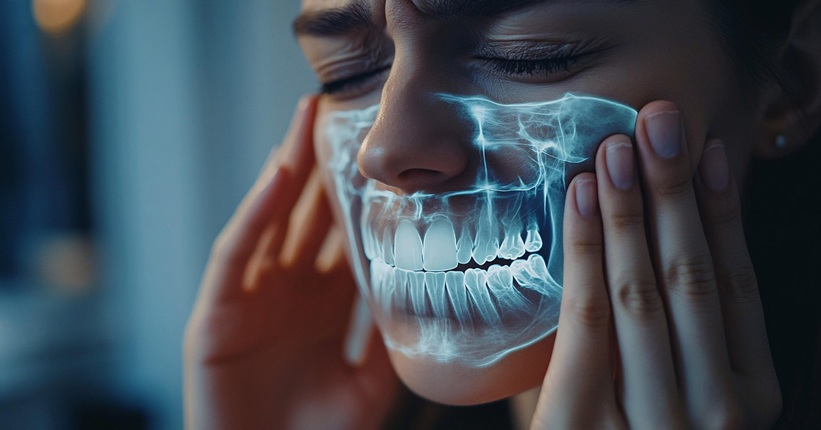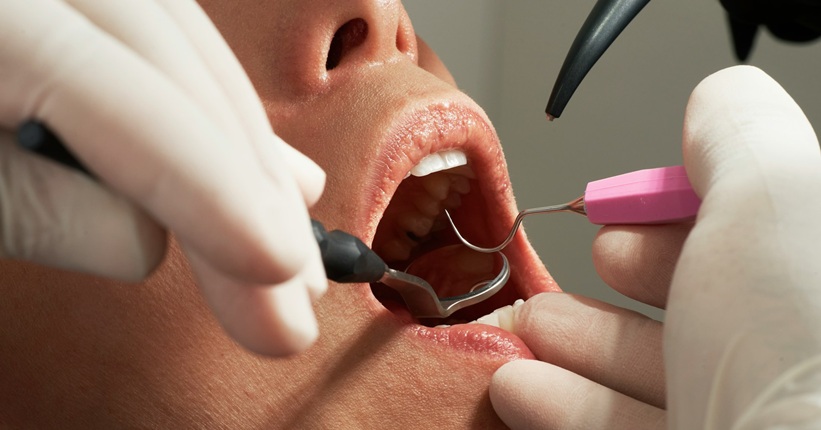
Aesthetic restoration of the tooth - what effect can be achieved
Modern dentistry is so advanced that teeth are no longer just a tool for eating, but have become an essential part of our identity. Thanks to the latest techniques and technologies, tooth restoration is no longer just about restoring functionality, but increasingly also includes the aesthetic aspect. Whether it is whitening, veneers, implants or straightening, all this is aimed not only at improving health, but also emphasizing natural charm and self-confidence. Nowadays, a beautiful smile is not only a symbol of health, but also a path to better well-being and greater self-confidence. How many damaged teeth can be restored? What are the benefits of tooth restoration and how can it improve our quality of life?
How much of a damaged tooth can be restored?
Dentistry has reached such an advanced level that even severely damaged teeth can be effectively restored, provided that a sufficient part of the tooth root and healthy periodontal tissue are preserved.
The method of restoration depends on the degree of destruction of the tooth. For small cavities, a traditional filling is often sufficient, which consists in removing the damaged part of the tooth and filling the cavity with a material such as a composite. For larger lesions, covering a significant part of the tooth crown, crowns, inlay or onlay may be required. These are artificial structures formed to perfectly match the shape of a natural tooth, restoring its function and appearance.
When the tooth is so damaged that it is impossible to restore, there is the possibility of using a dental implant. An implant is an artificial tooth root, surgically inserted into the place of a lost tooth, serving as the basis for an artificial crown.
Tutti i metodo sono imparato non solo per ripristino a funzionalità del dentu, ma anche di improvere esthetic, così che il patiente può avviare la siglia ancora.
Advantages of prosthetic restoration of teeth
Prosthetic restoration offers many benefits, covering both functional and aesthetic aspects:
- Restoration of chewing and speech function — helps to regain the ability to eat and speak without pain or discomfort, which significantly improves the quality of life.
- Improving the aesthetics of a smile — the restoration of missing or damaged teeth improves the appearance of a smile, increasing the patient's confidence.
- Protecting the rest of the teeth The absence of a tooth can cause the others to shift, which leads to problems with the bite; prosthetic restorations maintain the correct position of the teeth.
- Structural support — Tooth loss can lead to jaw bone atrophy; implants help maintain bone structure and prevent bone loss.
- Durability — Crowns, bridges and implants are designed for many years of use, making them a cost-effective solution.
- Confort — modern reconstructions are tailored to the individual anatomy of the patient, providing comfort and natural feeling.
Ways to aesthetically restore teeth
Veneers
Veneers are thin ceramic or porcelain coatings, permanently glued to the front surface of the tooth, changing its color, shape, size or length. They are used in the case of:
- discolored teeth (e.g. after medication or dead root)
- worn teeth (e.g. due to aging or bruxism)
- broken or cracked teeth,
- denti non valori o con intervalli unevenali.
Veneers precisely adjust to the shape and color of natural teeth, which greatly improves the aesthetics of the smile.
Prosthetic crowns
A crown is an artificial attachment placed on a damaged or weakened tooth, restoring its appearance, strength and shape. It is used when:
- the tooth is and cannot be repaired with a filling,
- the tooth needs strengthening (eg after root canal treatment),
- a toeth is missing and a crown is fixed on the implant,
- the tooth is severely deformed or discolored.
Crowns are made of metal, porcelain, ceramic or composite - the choice depends on the position of the tooth, the patient's preferences and the recommendations of the dentist.
Inlays, onlays and overlay crowns
- Inlay — insert adapted to the cavity inside the tooth surface, ideal for small and medium cavities without covering the edges.
- Onlay — a larger insert covering one or more edges of the tooth, used for major damage but not requiring a full crown.
- Overlay — a partial crown covering the entire surface of the tooth, but not descending to the gum line, used for large damage while preserving a large part of the natural tooth.
Restoration of a tooth on fiberglass
This technique uses fiberglass and composite materials to restore the tooth when the root is healthy but needs support. After cleaning the root canal, fiberglass is placed, which is light-cured, and then the crown is rebuilt from the composite. This method is less invasive, durable and very aesthetic.
Implants
An implant is a titanium screwdriver that is implanted into the jaw bone, replacing the root of the tooth. After integration with the bone, a crown is attached to the implant, which looks and functions like a natural tooth. Implants are durable, functional, protect the bone from atrophy, aesthetic and do not require grinding of adjacent teeth, as is the case with bridges.
However, not everyone can be a candidate for implants — the right amount of bone and good hygiene habits are necessary. The decision is made by the dentist after consultation.
How long will a tooth last be restored?
The durability of the restoration depends on many factors: the patient's state of health, the technique and materials used for the restoration, the skills of the dentist and oral care.
- Crowns, bridges, inserts and overlays can last 10—20 years or more.
- Porcelain veneers usually last 10—15 years.
- Dental implants can last 25 years or even the entire life of the patient.
However, these are average values and individual results may vary. A final treatment plan should be determined by an experienced dentist after a thorough assessment of the condition of the oral cavity.
Content author

Dr. Jędrzej Gącienica-Ciułacz
Dr. Jędrzej Gącienica-Ciułacz is a dentist who, thanks to his cordial approach, facilitates visits even for the most fearful patients. His extraordinary ability to build trust and natural kindness allows patients to feel safe and comfortable from the first moments in the office. He is a doctor who does not recognize the concept of “hopeless case” — instead, he treats every challenge as an opportunity to create a beautiful, healthy smile. By combining his medical knowledge with an individual approach to each patient, he creates an atmosphere of support and understanding.

Start treatment already today!
Make an appointment and discover why our patients recommend us to their loved ones. We will take the utmost care of your smile.


